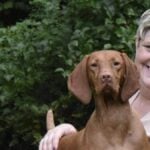
Home » Judging the Basset: The Field-Ring Connection
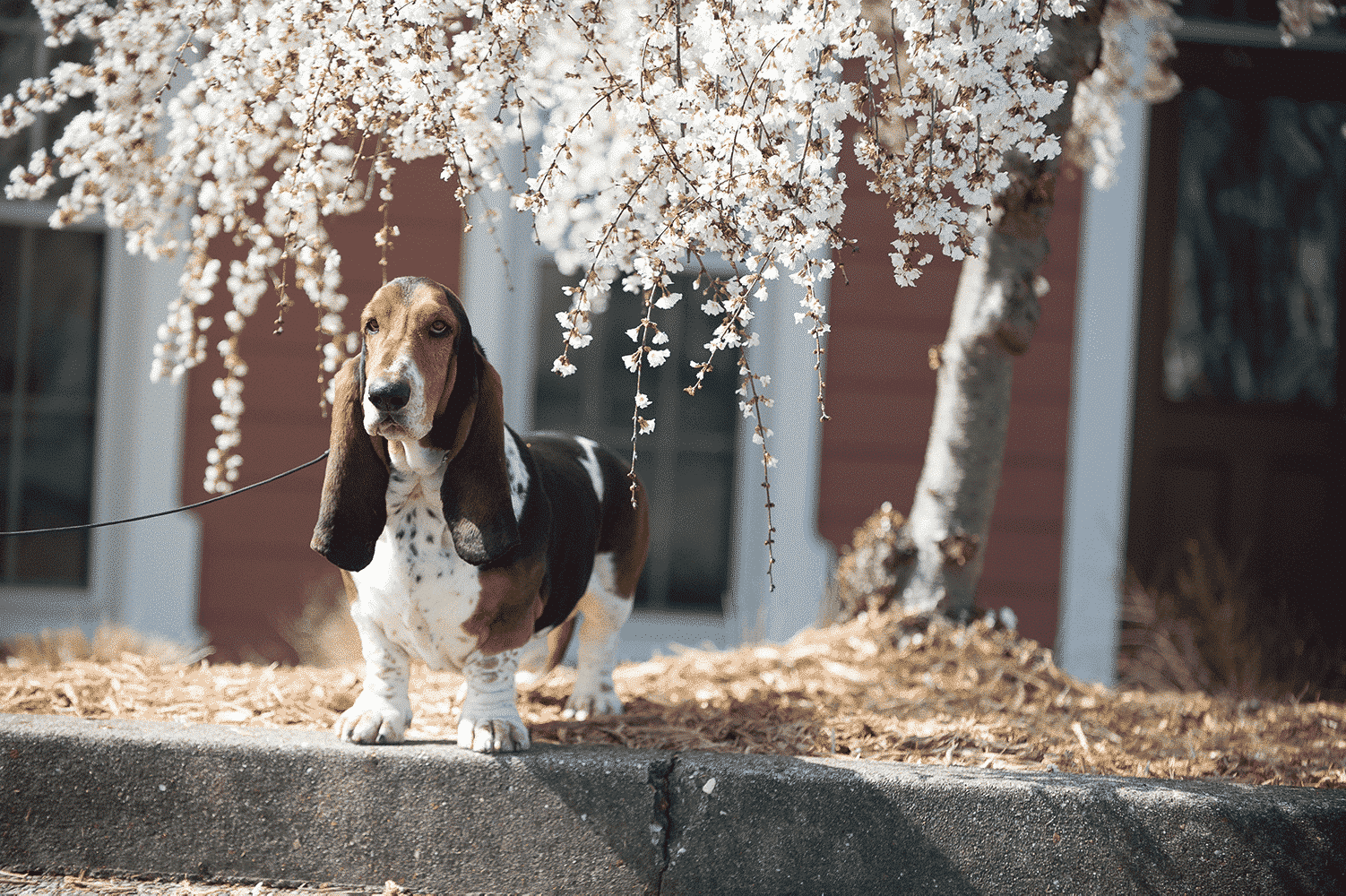
Bred to hunt over varied terrain and through uncertain weather, the Basset is a working, persistent, energetic hound—a far cry from the usual stereotypes that Basset Hounds are lazy or “speedbumps.”
The Basset is a scenthound, and much of its structure is ideally suited for scenting and for endurance on the hunt. Their short legs not only slow them down but also put them close to the ground and the scent line they are following. The structure of their head helps to concentrate scent, and their overall body proportions provide them with strength and, yes, agility to hunt all day.
In this article, I’m not attempting to cover the entire standard—for that, I will refer you to excellent educational resources available on the Basset Hound Club of America’s website and to one of our workshops held at each National Specialty or through judges’ education groups. Instead, I want to concentrate on the elements of the Basset’s structure that suit the breed for scenting and endurance on the hunt; these are overall proportion and balance, the completely functional head, and the running gear, both fore and aft.
In brief, Bassets are descended from the St. Hubert Hounds in France, with a short-legged mutation occurring in the original hounds, and those dogs being selectively bred because it gave hunters on foot a better chance of following their hounds and gave them time to reload their muskets. The achondroplasia that shortens the Basset’s legs also has a significant impact on the whole of the front assembly.
Looking at the dogs lined up in the ring, your first impression will always be overall proportion and balance. In Bassets, the ratio of length to height should be about 2:1, measured from prosternum to point of buttock. The distance from the deepest point of the chest to the ground should be no more than 1/3 the total height of the dog in adults.
There is a considerable range of size and substance in Bassets—it’s important to bear in mind that the standard calls for a dog that is “heavier in bone, size considered, than any other breed of dog.” At the same time, the Basset must be able (as one experienced field trailer put it) to “make it over logs and obstacles…and fit through heavy underbrush.” While we don’t want a light-boned dog, we should also guard against exhibits that are overdone to the point of exaggeration, and especially those that are fat or out of condition.
The neck should have good length—bear in mind that when working in the field, the Basset will move with its head down and forward to scent, so enough length of neck to reach the ground easily is required. If the neck appears short, it’s often a reflection of a front assembly set too far forward, which may also be betrayed by a lack of prominent pro-sternum. Steepness in the shoulders is a serious fault, as it will affect the Basset’s ability to move efficiently.
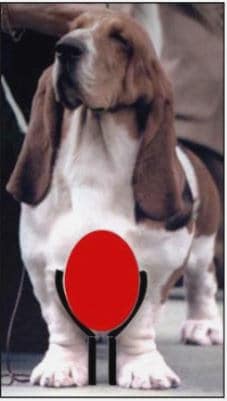
The Basset must be examined on a ramp, at all levels of competition through Best in Show. Once the dog is set on the ramp, viewed from the front, the wrap-around front should be evident. This front is a real stumbling block for some judges coming from breeds with a more conventional long-legged front. In the wrap-around front, the heavy-boned and crooked legs literally wrap closely to the chest, with the forelegs hugging the ribcage and forming a typical “egg cup” shape that supports the Basset’s capacious and deep chest. This chest must house a strong heart and lungs for endurance in the field. For balance, the feet turn out a “trifle,” and this very slight turn-out should be evenly matched. A Basset with a “mismatched” front—where one foot turns out more than the other—will labor harder as they move.
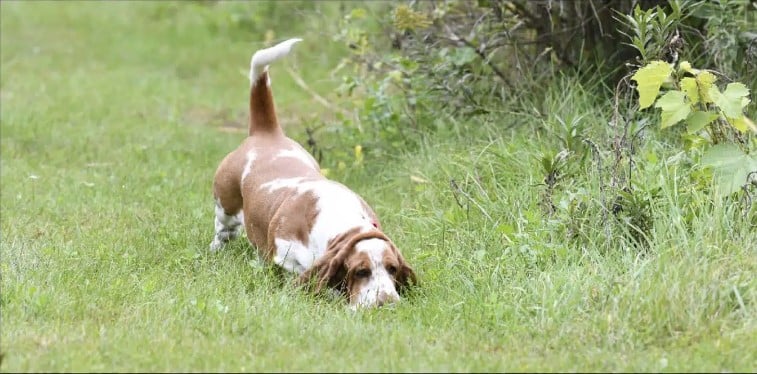
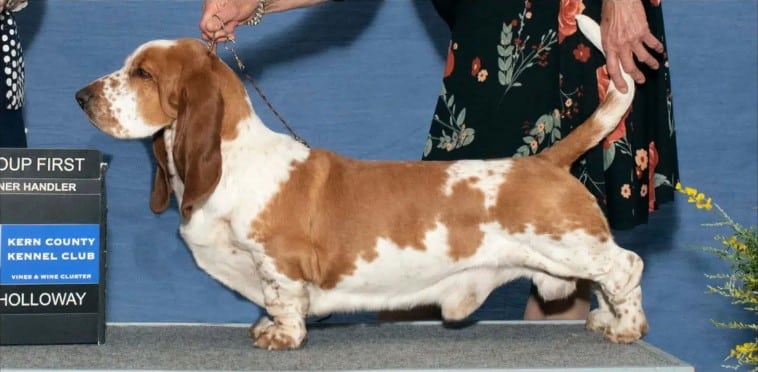
Surmounting this front is the Basset’s beautiful and functional head. Here should be seen a head with the muzzle about the same length as the skull from stop to occiput, with the skull well-domed and a pronounced occipital bone. In profile, the planes should be parallel—although this can be hard to find without also finding a faulty broad, flat skull, so the judge often has to balance this evaluation. A good scissors bite combined with a good, square lip will provide the desired squared-off muzzle—both under and overshot bites are serious faults. All over the head, the skin should be loose, falling in wrinkles over the brow when the head is lowered.
The ears, which should be set low (almost appearing to be set on the neck), are very long—reaching well around the nose if drawn forward—and velvety. They hang in loose folds with the ends curling in slightly. A high set or flat ear is a serious fault and a dry head with tight skin is a fault. Remember, these are not cosmetic issues—they are functional faults. The ear falling forward to the nose in the field concentrates the scent, and the loose skin over the head protects the Basset’s eyes and face from brambles in the thick brush in which rabbits and other small game live and hide.
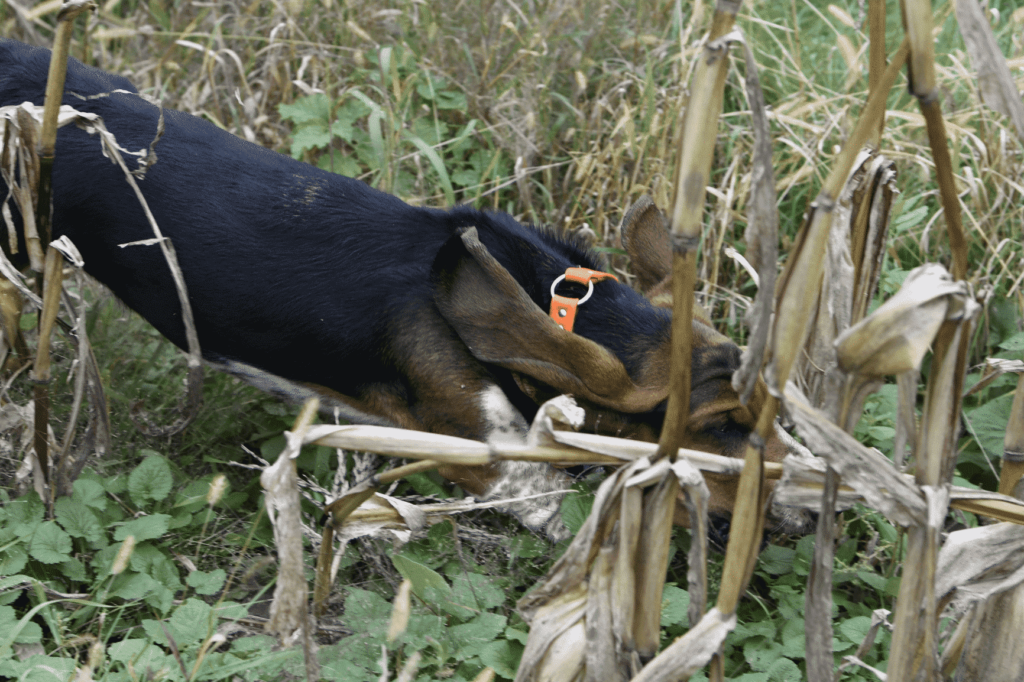
Almost all the other serious faults in the Basset Hound standard are in the front assembly, because these are faults that affect the running gear—and that’s the money-maker for a hunting hound! However, it’s important to bear in mind that some of these faults must be felt, rather than seen, because the Basset Hound’s loose skin can do an excellent job of hiding some key faults. The Basset is a dog that requires a truly hands-on examination.
Because the skin over the front and shoulders can be very loose, it can obscure several faults:
Finally, with the Basset on the ramp, evaluate the feet. A massive foot that is relatively tight, with good padding, will support the Basset for a full day’s work; a flat or splayed foot will not.
The Basset Hound needs a capacious chest for endurance in the field. That chest should be protected by a deep and long ribcage. The loin should be relatively short. Flanged ribs and flatsidedness are both faults. Set up, the topline should be level and firm without dip or roach. However, please do not press down on the topline to check firmness, as some judges have been seen doing! This quality can be best evaluated as the Basset is moving on the go-around.
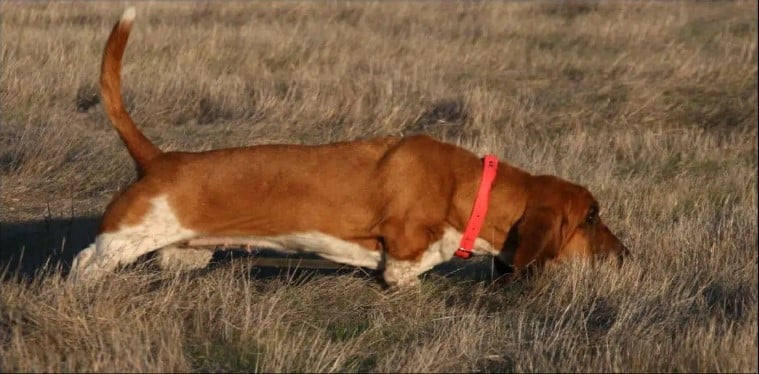
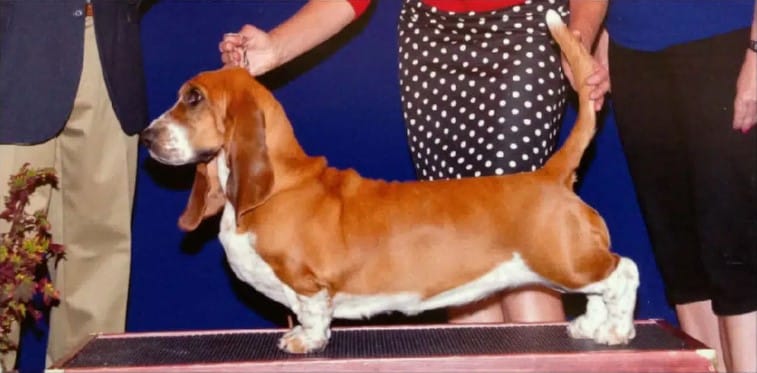
The hindquarters should be well angulated and have well-developed muscles. Not mentioned in the standard, but mentioned by virtually all long-time breeders, is the desirable “apple butt” with well-rounded thighs that display strength. A light or slack rear is a fault. The hind legs should stand firmly parallel. Cow hocks or bowed legs (also part of running gear) are serious faults, as are steep, poorly angulated hindquarters.
As the Basset moves away, look for parallel action in the rear legs—Bassets do not converge. On the return, look for true movement in front, without paddling, weaving, overlapping or any deviation from a smooth, powerful, effortless motion. The hound in front of you will cover literally miles on a hunting day and must be able to do so without any waste of motion or energy. When “Tally-Ho” is called, its concentration is on the rabbit, not on its fatigue!
Disqualifications are very rarely seen in the ring. They are few: Height over 15 inches; knuckling over of front legs; and distinctly long coat. Though a disqualification in the conformation ring, distinctly long coats do come up even in well-established show lines. (You can find pictures of many very well-loved long-haired Bassets at the Facebook group: Bassets—Long Hair Beauties, which is fun to visit!)
In addition to the BHCA Judges’ Education Presentation, the BHCA website includes a list of approved mentors and several previously published articles on judging the Basset Hound. Finally, I encourage you to contact us if you are interested in attending a field trial (wear boots and bring a big stick!) to see Basset Hounds doing what they were bred to do. It will put your understanding of the breed in a whole new context!
Judging the Basset: The Field-Ring Connection – Showsight Magazine October 2020 Issue
By Sylvie McGee for the Basset Hound Club of America
Showsight Magazine is the only publication to offer dedicated Digital Breed Magazines for ALL recognized AKC Breeds.
Read and learn more about the charming Basset Hound dog breed with articles and information in our Basset Hound Dog Breed Magazine.
Error embedding FlippingBook shortcode, please check the flipbook url. (https://digital.showsightmagazine.com/view/751318/)
